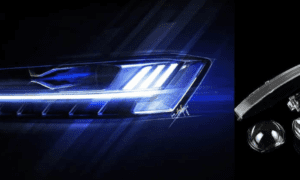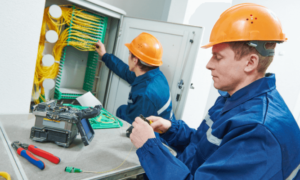What Does Boot Device Not Found Mean?
The boot device not found error can occur during the process of booting the operating system Windows 10/8/7. When it occurs, you can see an error message on your screen. However, different people may encounter different error messages. Here are some examples:
- Boot Device Not Found. Please install an operating system on your hard disk. Hard Disk (3F0)
- No boot device found – insert boot disk and press any key.
- No Boot Device Found. Press any key to reboot the machine.
- No boot device is available.
Causes of Boot Device Not Found Error
There are various reasons that could cause the “cannot find boot device” error. Here are some of the most common reasons:
- The wrong boot order is in the BIOS.
- Hard disk connection problem.
- Corrupted or missing system files or boot files.
- Damaged Master Boot Record (MBR) or boot sector.
How to Fix the Boot Device Not Found Error?
How to fix the boot device not found error? If you also encounter the same error, you can read this section to get 5 helpful methods.
Method 1. Hard Reset Your Computer or Laptop
Hard reset can rebuild the connection between BIOS and hardware. So, you can try performing a hard reset to fix the “cannot find boot device” error. Here’s the way:
- Turn off your computer.
- Remove any docking station and unplug the AC adapter.
- Check and unplug any other external devices plugged into the PC.
- Next, press the power button for 15 seconds to drain the remaining power.
- Then, press the power button to launch the system.
- When the Startup menu appears, use the arrow keys to select Start Windows normally, and press Enter.
Method 2. Check and Modify Your PC Boot Order
The wrong boot order in the BIOS can also cause your PC unable to boot from the hard drive and then result in the no boot device found error. In this case, you need to change the boot order in BIOS to ensure the computer boots from the correct device. Here’s the guide:
Step 1. Restart your PC and press the specific key according to the manufacturer of your device to enter the BIOS.
Step 2. In the BIOS Setup Utility main interface, go to the Boot tab and check the boot order. If your PC is in the wrong boot order, please use the ↑↓ keys to modify the bootable disk as the first boot device.

Step 3. Press the F10 key to save the change.
Restart your PC and check if the no bootable device error has been resolved. If the problem persists, please try the next method.
Method 3. Test and Fix Hard Disk
The no bootable device error is always caused by a damaged or faulty hard disk. So, you need to check if there is anything wrong with your hard disk. To do that, I recommend MiniTool Partition Wizard to you.
It is a professional and free partition manager that provides multiple features to help you manage your partitions and disks, such as moving/resizing partitions, extending partitions, merging partitions, splitting partitions, cleaning disks, checking disks, and so on.
However, if your OS is problematic with the no operating system error or the system fails to boot, you need to buy MiniTool Partition Wizard Professional Edition because the Free Edition doesn’t support the Bootable Media feature. In this case, you need to do as follows:
Part 1. Create a bootable USB flash drive
Step 1. Connect your USB hard drive to a working computer, and then download MiniTool Partition Wizard Pro on this PC.
Step 2. Next, launch it into its main interface and click Bootable Media in the top right corner. Then click WinPE-based media with MiniTool plug-in.

Step 3. In the Choose media destination window, select the USB flash drive option. After that, wait for the process to be complete. Once done, you can create a bootable USB flash drive successfully.
Part 2. Use MiniTool Partition Wizard’s Surface Test
- Use the bootable USB flash drive to boot your PC, and then click MiniTool Partition Wizard to launch this tool.
- In the main interface, select the problematic disk and click Surface Test from the left pane.
- Next, click Start Now to start a disk test.
- After scanning, undamaged blocks are green and damaged ones are red. Transfer data out and use specialized software to shield bad tracks if bad sectors are present on the disk. If there are still red blocks, replace the hard drive to fix the error.

Method 4. Repair MBR or Boot Sector
When MBR went wrong, you can easily see the no boot device detected error. In this situation, you can try repairing MBR to fix this error. To do that, you can also use MiniTool Partition Wizard. This partition software provides a Rebuild MBR feature that can help users to rebuild the MBR. Here are the detailed steps:
- Use MiniTool Partition Wizard Pro to create a bootable media, and then use it to boot your PC.
- In the MiniTool Partition Wizard main interface, select the target disk and then choose Rebuild MBR from the left pane.
- Click Apply, and then wait for the fixing process to be complete.

Method 5. Fix Operating System
If your operating system files or folders become deleted, lost, or corrupted, you may also encounter the no boot device detected error. In this case, you can follow the guide below to fix this error:
Step 1. Prepare a Windows installation disc, CD/DVD, or USB flash drive and connect it to your PC.
Step 2. During the installation process, launch Command Prompt.
- In Windows 7, under the System Recovery Options tab, click Startup Repair.
- In Windows 8/10, click Repair your computer, then select Troubleshoot > Advanced options > Automatic Repair (Windows 8) or Startup Repair (Windows 10).
Wrapping Things up
This post provides 5 effective methods to help you fix the boot device not found error. You can try them one by one until you fix this error successfully.





























